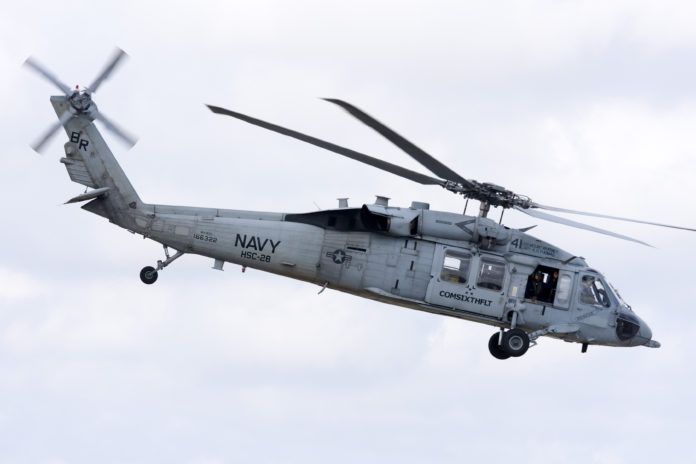Protest challenging Navy’s technical evaluation in a helicopter procurement is denied. The protester alleged in various ways that the Navy either misinterpreted test flight data or misunderstood its approach. GAO, however, found that the Navy understood what the protester was offering; the agency just didn’t like its as much as the awardee’s. The protester also argued that the Navy engaged in disparate treatment in evaluating proposals. But GAO found that differences between the protester’s and awardee’s ratings were based on differences in their technical approach.
The Navy issued a solicitation seeking helicopters to be used for pilot training. Five offerors submitted proposals, including Airbus Helicopters, Inc. and AgustaWestland Philadelphia Corp. The Navy awarded the contract to Agusta, finding that its proposal presented the best value. Airbus protested.
Airbus first challenged a weakness it received based on its approach to the autorotation procedure under the solicitation’s aircraft system subfactor. Autorotation is an emergency procedure that occurs when a helicopter experiences a loss of engine thrust. When a helicopter engine fails, the aircraft can maintain flight thought rotor speed and lift generated by airflow moving up through the engine system rather than from the engine. Student pilots practice autorotation procedures to learn to fly and land a helicopter in the event of engine failure. To train students in autorotation procedures, the Navy needed helicopters with engines that decouple and the recouple with the rotor.
The Navy conducted several test flights with Airbus’s proposed helicopter. It was concerned about the speed at which the engine decoupled and recoupled from the rotor. The Navy felt that the speed allowed too narrow of a margin for the for a student pilot to conduct autorotation maneuvers. The Navy notified Airbus about this problem during discussions. Airbus proposed to reduce the decouple speed by a certain percentage. But the Navy determined that this did not resolve the problem and assigned Airbus a significant weakness for its autorotation approach.
Airbus claimed that the Navy failed to understand its autorotation approach and failed to consider Airbus’s explanations during discussions. First, Airbus claimed that based on expert flight analysis, the decoupling actually occurred at a lower speed than Navy alleged during tests. And while it was possible that decoupling could occur at a higher rate, that rate was the uppermost limit.
GAO rejected this argument, noting that in written submissions, Airbus had affirmed the Navy’s decoupling data, and even now affirmed that that decoupling occurred at a high speed. The Navy acted reasonably in relying on information Airbus provided during discussions and its final proposal which was in line the Navy’s observations on decoupling. The agency was not required to use flight data to contradict its qualitative assessment on decoupling when Airbus had already confirmed them.
Airbus offered declarations for its own pilots concerning their observations of the test flights. These pilots stated that they observed that recoupling had occurred at a lower rate than that reported by the Navy, and the two instances recoupling that did not occur at that rate were attributable to pilot error.
GAO questioned whether the premature recoupling was due to pilot error. The Navy pilot that tested Airbus’s helicopter had over 2700 hours of operational and test flight experience. Regardless, GAO opined that even if it were to find that premature coupling was attributable to some operational error, it was still reasonable for the Navy to conclude that this aspect of the aircraft’s performance appreciably increased risk given that the purpose of the aircraft was to train students.
Airbus also complained that its autorotation approach had been unreasonably penalized for suggesting that the Navy use the transient range—an additional range of rotor speed that can be used as temporary margin during engine failure maneuvers—to conduct autorotation training. GAO, however, found that the Navy had considered the transient range and decided it did not resolve its concerns with Airbus’s autorotation performance.
Next, Airbus objected to a weakness it had received for its cockpit controls and display. Airbus had installed a display called the first limit indicator to keep the pilot informed about engine performance. The Navy, however, found that this display was overly simplistic and would ultimately lead to pilots to develop ineffective instrument scan habits. Airbus maintained that its first limit indicator was awesome, but GAO found that its arguments simply amounted to disagreement with the Navy’s conclusions.
Airbus further alleged that the Navy disparately evaluated proposals. Specifically, Airbus alleged that the Navy had credited Agusta with a strength under an instrument training element even though the company proposed redundant dual band radios and did not meet the element’s requirements. On the other hand, Airbus asserted, its instrument training did not propose redundant radios and yet did not receive a strengths.
But GAO found no basis to question the agency’s conclusions. The Navy identified specific benefits in Agusta’s approach despite the dual band radios. While the Navy also recognized the benefits of Airbus’s proposal, it concluded that Airbus’s approach had other problems that outweighed its benefits. Ultimately the record showed that Airbus and Agusta offered unique solutions under the instrument training element. The fact that only Agusta was assessed a strength did not reflect an evaluation error but rather the difference between proposals.
Finally, Airbus objected to the source selection decision. It alleged that Navy overlooked positive discriminators in its proposal, including instrument flight rules certification and a dual engine platform that was similar to the Navy’s current fleet of helicopters. GAO, however, found that the Navy’s failure to consider these features was reasonable because the neither of these feature were part of the solicitation’s evaluation criteria.
Airbus is represented by Michael F. Mason, Christine A. Reynolds, Adilene Rosales, and Sarah E. Goodwin of Hogan Lovells US LLP. The intervenor, Agusta, is represented by Paul F. Khoury, Kendra P. Norwood, Moshe B. Broder, and Nicholas L. Perry of Wiley Rein LLP. The agency is represented by Amy N. Hanson, Cristina Costa de Almeida, Keli Norris, Patrick Coll, and Ann Stewart of the Navy. GAO attorneys Uri R. Yoo , Raymond Richards, and Laura Eyester participated in the preparation of the decision.





